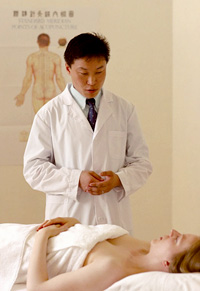Pain is the most prevalent health condition among U.S. workers and the most expensive in terms of lost productivity. Recent studies suggest more than six in 10 adults over the age of 30 experience chronic pain.
Unfortunately, workers' comp can be a quagmire of contradictory and insufficient rules and regulations as to what treatments are and aren't covered. The American College of Occupational and Environmental Medicine (ACOEM) has been in the process of revising its Occupational Medicine Practice Guidelines, used by health care practitioners when treating workers' comp patients. Having revised the sections on elbow and low back pain, the ACOEM just recently unveiled its revised section on dealing with the thorny issue of chronic pain.
 The new evidence-based guidelines include more than 200 recommendations for chronic pain, developed by a multidisciplinary expert panel and reviewed by leading medical and health organizations. The recommendations focus on treatments for several chronic pain conditions including: complex regional pain syndrome (CRPS), neuropathic pain, trigger points/myofascial pain, chronic persistent pain, fibromyalgia and chronic low back pain. The recommendations, based on more than 1,500 references including 546 randomized, controlled trials, feature:
The new evidence-based guidelines include more than 200 recommendations for chronic pain, developed by a multidisciplinary expert panel and reviewed by leading medical and health organizations. The recommendations focus on treatments for several chronic pain conditions including: complex regional pain syndrome (CRPS), neuropathic pain, trigger points/myofascial pain, chronic persistent pain, fibromyalgia and chronic low back pain. The recommendations, based on more than 1,500 references including 546 randomized, controlled trials, feature:
- detailed recommendations regarding the use of magnets, acupuncture, manipulation/mobilization, myofascial release and electrical therapies such as PENS and TENS;
- a discussion of spinal cord stimulation for painful conditions;
- a detailed review of psychological services (e.g., evaluation and behavior therapy) and rehabilitation for delayed recovery, including biofeedback, work conditioning/work hardening/early intervention programs, and interdisciplinary pain rehabilitation programs; and
- a focus on functional restoration, including active exercise and behavioral programs.
The new ACOEM guidelines define acupuncture as follows:
"Acupuncture originated in China and is based in part on the theory that many diseases are manifestations of an imbalance between yin and yang as reflected by disruption of normal vital energy flow (qi) in specific locations referred to as meridians. Needling along one of the 361 classical acupuncture points on these meridians is believed to restore the balance. This stimulation is classically done with thin, solid, metallic needles, which are then manipulated (or turned) manually or stimulated electrically (electroacupuncture). Besides needling, acupuncture frequently involves moxibustion and cupping. In addition to traditional Chinese acupuncture, there are many other types of acupuncture, including those that access non-traditional acupuncture points. Acupuncture has been utilized to treat many different musculoskeletal and other disorders, with some evidence that patients seek this treatment if they have more severe pain."
Specific to acupuncture, the guidelines state the following:
Acupuncture for Chronic Persistent Neck or Back Pain, Chronic Trigger Points/Myofascial Pain, or Knee/Hip Osteoarthrosis
- Acupuncture is recommended for select use for treatment of chronic moderate to severe neck pain, chronic trigger points/myofascial pain, chronic LBP, and osteoarthrosis of the knee or hip as an adjunct to more efficacious treatments.
- Indications - Moderate to severe chronic neck or low back pain, chronic trigger points/myofascial pain, and osteoarthrosis of the knee or hip. Prior treatments should include NSAIDs, exercise, and for trigger points, a trial of dry needling or injection(s) with bupivacaine. Additional considerations prior to treatment with acupuncture include heterocyclic anti-depressants and TENS. For osteoarthrosis, patients should have been unsuccessfully or insufficiently treated with a graded walking program, weight loss, and NSAIDs.
- Frequency/Duration - A limited course as an adjunct to a conditioning program that has both graded aerobic exercise and strengthening exercises for treatment of neck or back pain, or trigger points/ myofascial pain during which time there are clear objective and functional goals that are to be achieved.
- Indications for Discontinuation - Resolution, intolerance, non-compliance, including non-compliance with aerobic and strengthening exercises.
- Strength of Evidence − Recommended
The guidelines also recommend acupuncture for adhesive capsulitis, lateral epicondylitis or migraine headaches, but only as a secondary or tertiary treatment. Acupuncture is not recommended for treatment of complex regional pain syndrome (CRPS).
In addition to acupuncture, the guidelines had recommendations for the use of yoga as a treatment in cases of chronic pain. The guidelines state:
Yoga for Chronic Low Back Pain
- Yoga is recommended for select highly motivated patients with chronic LBP.
- Indications - Chronic LBP patients who are motivated to try and adhere to a program of yoga.
- Indications for Discontinuation - Non-tolerance, non-compliance.
- Strength of Evidence − Recommended
The guidelines also give a recommendation for yoga as a treatment for other types of chronic persistent pain, provided the patient is very motivated to adhere to the program. There is no recommendation for or against using yoga to treat CRPS or trigger points/myofascial pain.
Editor-in-Chief Kurt T. Hegmann, MD, MPH, said, "These guidelines were developed using ACOEM's published methodology, which incorporates the highest scientific standards for reviewing evidence-based literature, ensuring the most rigorous, reproducible, and transparent occupational health guidelines available. Literally thousands of hours of review of the available scientific literature went into this process, yielding what we consider state-of-the-art medical guidelines."
The updated guideline sections may be ordered via the ACOEM Web site by visiting www.acoem.org/practiceguidelines.aspx.



